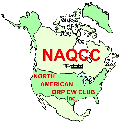
 | NAQCC News |
| May 15, 2010 | NAQCC Web Site | Issue #118 | |
|---|---|---|---|
| In this issue: 1. May Sprint. 2. April Challenge Results 3. General Club News 3a. Web Site Tour 4. Featured Award of the Month 5. The NAQCC Elmer Project 6. CW Cartoon of the Month 7. Member Spotlight 8. News Items and Articles by Our Members |
| 1. MAY SPRINT: Our regular monthly sprint is this Thursday, May 20 at 0030-0230Z. If you're new to ham radio and unfamiliar with Z or UTC time, that's Wednesday evening at 8:30 PM Eastern Daylight Time. I'm interested and excited to see what the turnout will be for the May sprint after our record-shattering performance in April. We definitely will be sending out a reminder via our NAQCC mail-list the morning of the sprint to see if that was one of the reasons for our great performance in April. I would love to see us cross the 100 log barrier for the second month in a row even though it means more work for me doing the cross-checking. As you adhere more and more strictly to all the rules for log submitting, it makes my job of cross-checking all that easier. There are still some minor little things that I need to correct in several logs each month before those logs are ready to feed into the cross-checker. 1. Do not put a colon (:) in the time, nor a Z after the time. That is it should be 0050 not 00:50 or 0050Z. If you use GenLog, that will be taken care of automatically. 2. Please number your multipliers consecutively. Do not simply put a 1, *, etc. for a new multiplier. That is it should be as shown in blue in the example log below, PA is 1, NJ is 2, TN is 3. If the mult is not new, put a hyphen (-) instead of a number. K3WWP 80 0131 KB3LFC PA 0001 1 2 K3WWP 80 0132 W2LJ NJ 0035 2 2 K3WWP 80 0133 AB4KX TN 5W 3 1 K3WWP 80 0134 W2SH NJ 0056 - 2Again if you use GenLog, its output file does this correctly. You may think that sounds very picky, but the cross-checker as all computer programs requires an exact format for its input data. Of course all of the above info can also be found on the Sprint General Rules page on the web site. Hope to work you in the sprint. I'll be looking to break the 50 QSO mark again for myself and hopefully hit 60. That's a QSO every two Remember our special First-Timer certificate that goes to the highest scoring participant who never before submitted a log for one of our sprints. April's winner was K0CW with 1,008 points. Also the prize of custom made bug/paddle handles or straight key knobs that goes to the one chosen in a random drawing among ALL participants who submit a log regardless of score. KH6G was the winner of the drawing in the April sprint. This prize giveaway will continue for the next 7 months now. If you are entering one of our sprints for the first time, we welcome you and hope you will be a regular participant from now on. Last month we welcomed a record number of new participants - 29!! Hopefully we'll have a flock this month as well. Remember this is only a very brief (well...) overview of the coming sprint. Be sure to read and understand the full general sprint rules and any specific rules for this month's sprints here. 2. APRIL CHALLENGE RESULTS: Our WARC bands challenge again was a true 'challenge' for some, while others seemed to master it more easily. I think it depended on the amount of time one had to spend on the challenge and perhaps on one's location. Those like me who didn't have all that much time usually found the WARC bands lacking in activity most of the times we could get on the air to check them. It was a struggle to even get the minimum 6 QSO's to earn a participation point. 30 meters was the work horse, while 17 provided a few of the QSO's. I don't think anyone reported a 12 meter QSO. That should change as sunspot cycle 24 gets into high gear for our next few WARC band challenges in upcoming years. Still once again we hit double figures with 11 folks mastering the challenge and reporting it. Located in the middle part of the USA in MN, KD0V made the most QSO's - 37 and worked the most states - 21. K1IEE on the East coast in ME worked the most DX entities - 11 - 9 being in EU. As always, full challenge info and results can be found here. 3. GENERAL CLUB NEWS: - It looks like no one else is going to enter our banner contest, so in the next newsletter we'll publish the entries and let you decide which one you like best. We'll combine your input with that of our club officers to decide which one we'll go with and make it availble for any webmaster who wants to use it to help publicize the NAQCC. 1. The choice of a 20, 40, or 80 meter dipole donated by John KO0KY that goes to the winner of a drawing among all those who have earned our club Friendship Award has the current members in the drawing: K3WWP, KI4DEF, KD2MX, NU7T, K4PBY, VE3HUR, K3RLL (ex-WA3ZBJ). K3WWP will not take part in the drawing, so there's a 1 in 6 chance of winning the prize. HOWEVER, YOU can add YOUR call to the drawing by earning and applying for the Friendship Award before June 30, 2010. 2. The CD-ROM book on the legendary HBR receiver donated by Jay W6HHT will be awarded in a unique way proposed by prize manager Mike KC2EGL. It goes to the first one who works 5 members with numbers in a 10 consecutive number block. OK, that needs further explanation. Working 5 different members with numbers in the 1-10 or 1231-1240 or 4501-4510, etc. ranges means you're a winner. Here I've worked AA4XX 0102, N4FI 0104, KU2US 0105, KI4GLH 0106, and N8IY 0110 which would qualify me to win, BUT the QSO's must take place beginning on February 1, 2010. Mine took place before that. It takes a bit of work to figure out and accomplish, but those who have any sense of ham radio history should love to have this great book. 3. An ARRL Simple Wire Antenna book donated by K3WWP goes to the one who refers the most new members to the club between January 1 and June 30, 2010. Currently the leading referrers are: N4DIT - 4 AA2YV - 3 AA4W - 2 K7PRZ - 2 NB4M - 2 VU2TS - 2 W9DAN - 2 WY3H - 2 and a whole flock too numerous to list have 1 referral. To count as a referrer the new member must list you as the SOURCE in his/her application. So be sure to make your recruits aware of that or you won't get a vote. 4. Custom made K1/K2 knob inserts made and donated by Gregg WB8LZG go to those who earn any two of the following club awards beginning October 1, 2008 and continuing until all are awarded. 30-30 Alphabet Prefix Friendship Club QSO-A-DAY Suffix Words So far our winners and the awards they earned are: NU7T - Alphabet Prefix, Suffix Words N8XMS - Suffix Words, Alphabet Prefix K3WWP - Suffix Words, QSO-A-DAY WY7N - Alphabet Prefix, Suffix Words Several others have one of the two awards earned. 5. Of course regular newsletter readers know about this one. 100 NAQCC QSL cards to the one who finds his or her own cleverly concealed call somewhere in the newsletter. More about that in a separate item below. So far these folks have won the QSL cards: KD1R, KM6NN, K4UK, K5RIX, N9AKF 6. More items made and donated by Gregg WB8LZG. Thanks Gregg (and other donors also). A selection of paddle handles, K1/K2 knobs, and straight key knobs. To win all you need do is enter a sprint and report your results, then be lucky enough to have your call selected randomly by computer among all participants. So far we have these winners: K3RLL, KD2MX, KH6G. This will continue through the November 2010 sprint. 7. An NAQCC Christmas Tree ornament. We're still awaiting details on this one from our prize manager. I think that covers it. The next time Mike visits here, we'll update any info that needs it. All prize info is always available on the Prizes page. Deadline for this issue is May 28. Remember it must be the person who owns the callsign. If it's not yours and you find it all you get is a well-done, no QSL's. Instead of waiting to see if you're a winner, we urge you to purchase a batch of these QSL's via the link above. You'll be proud to send them out to the folks you work and help publicize the club as well. 3a. WEB SITE TOUR: - Perhaps the most ignored section of the web site is our Guestbook. It's obvious what this section is about and doesn't need explanation. So we just urge you to take advantage of it and leave your comments for others to read, post your questions for others to answer, or just let us know you actually visited the web site. You may have to dust off the cobwebs when you go to sign the book because it is so rarely used. Although there are not many entries, a lot of them are interesting reading if you just want to read and not add anything yourself. 4. FEATURED AWARD OF THE MONTH: - We thought this feature in our newsletter would increase interest in our award, but it really hasn't done so as we don't notice any appreciable increase in award applications because of it. So from now on we'll eliminate this section and combine it with our every-other-issue listing of recent award winners. Full NAQCC Awards info here. 5. THE NAQCC ELMER PROJECT: 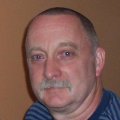 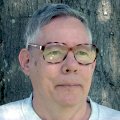 The Elmer project is co-ordinated by Karl N3IJR (L) and Ron K5DUZ. If you are interested in helping out or need help with any CW and/or QRP matters contact: K5DUZ - N3IJR - Our Elmer project and the QRS net in particular took a recent blow as described in this email from Karl N3IJR: John/Tom, I hope this email finds you both well. I wanted to write both of you about the Elmer Program. We have not had much activity to date but between Ron and myself we have helped with a few questions. Ron takes care of the technical stuff and I try to help with code questions. I would like to have all of the guys who expressed interest in being an Elmer to re-email me so that I can confirm their desire to help when needed. I wanted also to talk about the Sunday net. I know it was my idea and it has gone somewhat well recently, I have a problem. For at least the next few months I can not do the net. I find the time slot on Sunday will not work for me and weekday slots will not work either. So if there is anyone out there who would like to take over the net that would be great. The net can be on a night that would suit the hopefully new volunteer. This has been a challenging time for me and I really have not had much time for Ham Radio. I will try to keep up however I can with the Elmer Program. 73 fer nw, Karl/N3IJR Until we get a new volunteer as NCS, club president Tom WY3H will act in that capacity to keep the net going. Please check in when you have time and if conditions permit. The NAQCC QRS Net convenes each Monday at 0130Z when Standard time is in effect and 0030Z during Daylight savings time (Sunday evening at 8:30PM here in the USA Eastern time zone). From April through October, the frequency is 7118 kHz and from November through March it's 3575 kHz. Everyone is invited to check in for some hands-on CW teaching and learning. QRO is permitted for this one NAQCC activity since learning CW is so important and it may be difficult for newcomers to copy weaker signals amidst QRM or QRN. NCS (Net Control Station) is Tom WY3H using the club call of N3AQC. See Elmer Project on the web site for a summary of net procedure and much more info on other matters to help those who may need it. 6. CW CARTOON OF THE MONTH: 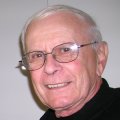 Let's take a comedy and/or nostalgia break now courtesy of Dick Sylvan W9CBT. Dick has been a long-time QRP/CW operator. One of his many talents is being a cartoon artist, and he is supplying a cartoon each month for the newsletter. The NAQCC is very honored to be one of just two organizations to feature Dick's cartoons. In addition to our newsletter, Dick's cartoons appear monthly in The K9YA Telegraph, an on-line only Ham Radio E-zine where he is the staff cartoonist. Dick has also authored a book entitled "Hi Hi - A Collection of Ham Radio Cartoons" available via his web site. A new cartoon will be appearing in each of our even-numbered newsletters. 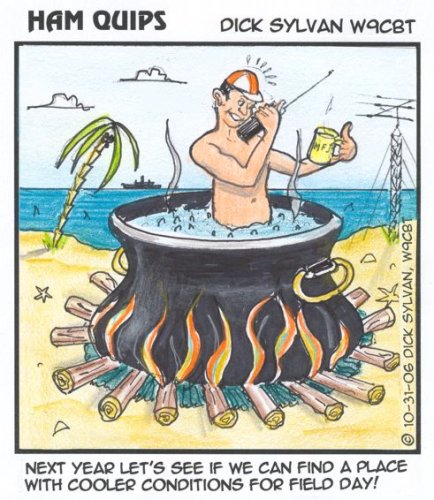 7. MEMBER SPOTLIGHT: 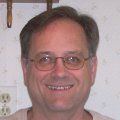 This section is managed by Paul N8XMS and any questions about it should go to John Dorson K2JHU #3325 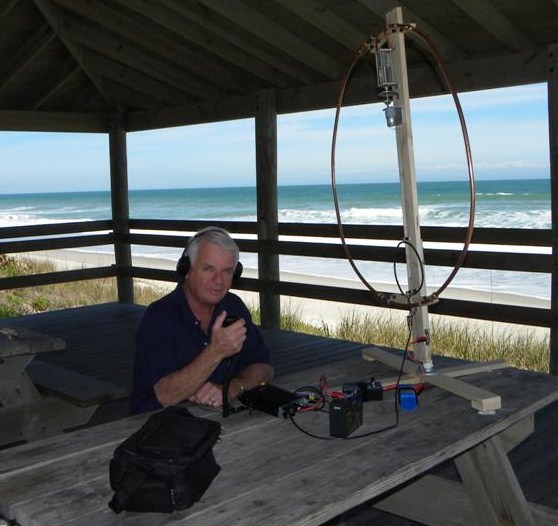 My name is John Dorson, K2JHU and I live in Melbourne Beach, Florida on the east coast about 40 miles due south of the space center. I was first licensed in 1952 at the age of 13. I was always interested in anything electrical when I was a very young boy. As a novice I operated mainly on forty meters. I received my technicians license about a year later and operated 6 meters mostly until I got my general and then advanced where I am today. I have mostly lived in restricted areas and as such have always had to use compromised antennas. Because of this I became interested in portable operations which I have done for the past 12 to15 years or so and mostly operate QRP. I enjoy building and testing antennas, mostly of compact design. Up until a few years ago a group of us would meet each week in a river park in Melbourne Florida and operate QRP. The unique thing about this operation was that we all used our homebrew magnetic loop antennas and always could work up into the northern areas of NY and NJ on most days. My most memorable contact I ever had was with Senator Barry Goldwater back in the 60's. I actually didn't know who he was until he told me. One of my best QRP long distant contacts was from out dock on the Indian River here in Melbourne Beach to the north western part of Oregon state. I was running 2.5 watts and an MP-1 antenna on 17 meter SSB. My current equipment is an FT-817, FT-857D, a Radio Kit 20 meter rig including a couple of auto tuners. For portable work I use the MP-1, magnetic loop and various wire antennas. I spent 40 years in the computer industry, 17 years in Real estate and am enjoying partial retirement. Now I have the time to begin studying for my Extra class license. Thanks for the opportunity to tell my story. John K2JHU 8. NEWS ITEMS AND ARTICLES BY OUR MEMBERS: 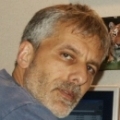 This section is a forum for you to tell other members what you've been up to on the ham bands or to submit an article dealing with some aspect of CW and QRP operation or equipment. Send your news items and articles to our news editor Paul KD2MX at (disclaimer) Any views expressed here are those of the member submitting them, and may not be in agreement with those of the NAQCC. I also worked my friend Mauro, I1MMR in Italy using 5 watts of power on 7.0265 Mhz. It can be done! We have been emailing each other and it just worked out tonight. Maybe I will have to find a bargain flight to Italy and have an eyeball with him. I don't think I can sleep tonight. QRP is the greatest. The other thing is that 7.0265 is in the middle of where most of the high speed CW guys are abounding. I'm comfortable with 18 WPM but the "big guns" are usually a lot faster than that. Maybe they are keyboard to keyboard. I do plan to get back into kit building and am in the process of choosing which lightweight, QRP transceiver kit I might build, and then operate by battery power while backwoods camping. I was hoping that other members who already have experience in kit building and "QRPing in the wild" might offer me some suggestions as to which QRP rig and power source they have found most efficient and enjoyable, both to build and to operate. Any suggestions would be appreciated via K1MBF@yahoo.com. 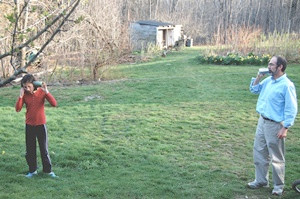 We had a successful QSO at a wavelength of about 30,000 meters and all fully voice-powered. Not quite up to the technical tour-de-force for voice-powered radios made by Mike Rainey (AA1TJ). For one ham this was his first QRP QSO (well not quite fair since it wasn't on one of our usual ham bands). While shifting topics, I told a few QRP jokes, mainly dealing with the mistaken impression that no one can hear a QRPer. A short technical lecture about signal strength was used to correct this misinformation. I believe that hams should have some understanding of the theory behind things like S-units. I introduced the decibel scale for power relationships and then laid out the common S-meter scale. This is not quite standardized, but close enough for our purposes. We then compared the signal strengths of a 100 watt station to a 5 watt station. This is a power ration of about 13db or 2.2 S-units (assuming 1 S-unit = 6 dB). So if the 100 watt station is S9, the QRP station at 5 watts would be about S6, a perfectly easy signal to copy under normal conditions. As an example, in reviewing my log, S5 seems to be the most common signal strength reported for my station. Since some of the new hams only use VHF-FM, we worked through a few examples. 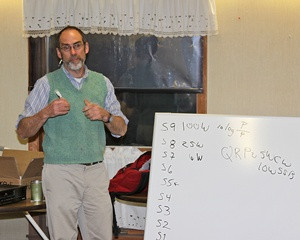 Next I showed what kinds of contacts can be made at QRP power levels. I brought a notebook full of QSL cards from US and DX stations. I talked about the fun of chatting with old friends and the thrill of breaking into a pile-up on some rare DX station. Having on-the-air success with QRP takes effort and I talked about being frustrated with my progress many years ago. This experience was used to introduce how QRP clubs help. I showed many of my NAQCC certificates for operating in sprints and challenges. NAQCC activities have helped me to develop a long log of successful QRP contacts. I and others lamented the hours of calling CQ QRP with little success. The monthly sprints gave me confidence that QRP works, and also honed my skills to be successful elsewhere on the HF bands where QRO operators rule the roost. I handed out information about NAQCC and other CW clubs. It was clear that if we are to build our ranks we will need to teach new hams morse code. That will be a future club project. Finally I demonstrated the other fun part of QRP - portable operations. 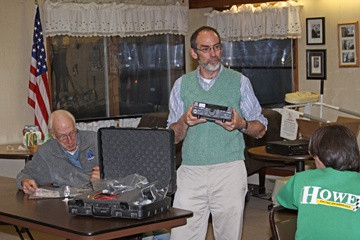 I brought my station in a suitcase: Ten-Tec Argonaut V, key, antenna, tuner, and battery cables. This really caught everyone's interests. I wasn't planning on doing an on-the-air demo but many people wanted to hear me work some QRP CW. Our club meets at a congregate living facility and we have an 80-meter dipole on the roof so in a few minutes I had my station on the air. Unfortunately, the QRN was quite strong that night and I was unable to complete a QSO. I was amazed at how much interest there was in CW operations. Someone asked me to send at 5 wpm, the old novice speed limit. That was actually hard for me to send at that rate, but I remember very clearly how hard copying 5 wpm was when I first got on the air! In the end we had a good time discussing QRP as yet another dimension of ham radio, something new and different for some hams. I hope to have some new CW operators on the air in a few months once we resurrect our training net. We already have a core group of dedicated builders with a Sunday afternoon Elmer get-together during the winter. I encourage my fellow NAQCC members to talk about the joys of QRP to your local clubs. If you like to talk, there are many more QRP-related topics that we could bring up such as: simple antennas, portable antennas, sunspots and propagation, and operating contests. From my location, go five miles south and you are in West Virginia. Go about eight miles west and you are back in West Virginia! So I am as close as can be to out-of-state. The other end of the Pennsylvania is a far piece for five watts. I have only an eighty-meter vertical loop at thirty-five feet, no slouch of an antenna but the shack is located in a hollow with three-hundred-fifty foot high hills on all sides which all top out at less than three hundred yards away! I definitely am not a big contest station. On the table is my top gun, an Elecraft K3, but it is a ten watt model and I have no mike for it so no jumping to voice in the contest! I would be alone, running the K3, the key, and the computer. And now there is an added problem. Ten years ago at the age of sixty-five I had a stroke that took the use of my left hand. So in essence I was going in with one hand tied behind me! Well, here I go and the only real hope was that I wouldn't make a fool of myself and embarrass the club. When the weekend was over I had 112 contacts on 80-meters and thirteen on other bands. I worked 32 of the 67 counties plus 40 ARRL sections. After all the multiplying I ended up with 61,632 points. The results were posted a couple of days ago. In the CW division (which includes all CW stations regardless of power) I came in tenth among fifty-nine entrys! In the QRP division I came in second out of thirteen entries! If you want to see just how big this contest is, just do a search for PAQSO and then scroll down to the 2009 results. I am happy with what I did and hope it will encourage some of the NAQCC guys to jump into their state contests. It is fun and you just might surprise yourself! 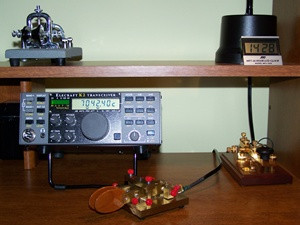 |
| The publication of our next newsletter will be announced via email to all members for whom we have a valid email address unless they specifically have unsubscribed from the email. Unless otherwise credited, all items are written by K3WWP. If you came directly to this newsletter, we invite you now to browse the NAQCC Web Site. |